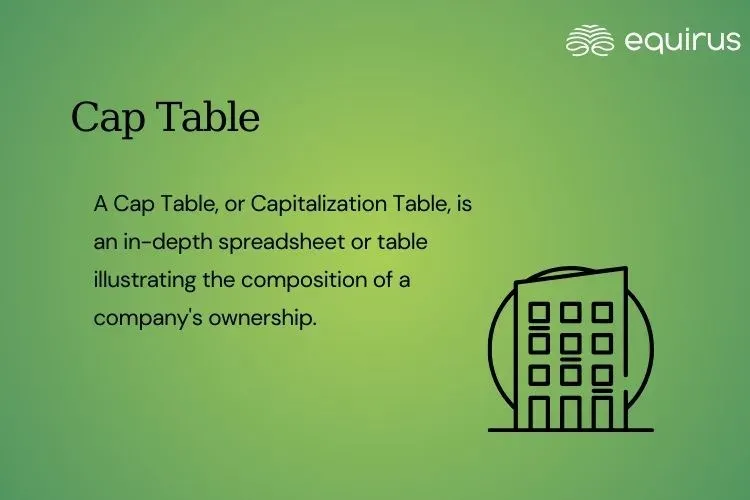Cap Table

Key Highlights
-
A cap table, or capitalization table, is an in-depth spreadsheet or table illustrating the composition of a company's ownership.
-
It states who holds what percentage of equity (shares) in the company, e.g., founders, investors, employees and monitors how that ownership fluctuates over time.
What is a Cap Table?
A Cap Table, or Capitalization Table, is an in-depth spreadsheet or table illustrating the composition of a company's ownership. It states who holds what percentage of equity (shares) in the company—e.g., founders, investors, employees—and monitors how that ownership fluctuates over time.
It is particularly valuable for startups, investors, and founders when fundraising, merging, or exiting.
What Does a Cap Table Include?
A good cap table normally consists of:
1. Shareholder Names: Founders, investors, employees, etc.
2. Types of Shares: Common shares, preferred shares, convertible notes, stock options, etc.
3. Number of Shares Owned: Actual number each of them holds.
4. Percentage Ownership: Ownership in terms of percentage of total equity.
5. Valuation Details: Price per share, pre-money and post-money valuation at funding rounds.
6. Dilution Impact: How new funding or option pools influence existing ownership.
Simple Example of a Cap Table
| Shareholder | Shares Owned | % Ownership |
|---|---|---|
| Founder A | 5,000,000 | 50% |
| Founder B | 3,000,000 | 30% |
| Investor X | 1,500,000 | 15% |
| ESOP Pool | 500,000 | 5% |
| Total | 10,000,000 | 100% |
This shows who owns what portion of the company at a particular time.
Why Is a Cap Table Important?
1. Investor Transparency: Facilitates current and future investors to grasp ownership and decision-making control.
2. Fundraising Decisions: Essential for deciding how much equity to relinquish in a new round of funding.
3. Valuation & Dilution Tracking: Represents how issuing new shares impacts current shareholders.
4. Exit Planning: Essential in acquisitions, IPOs, or when offering dividends.
Equity Instruments on a Cap Table
-
Common Stock: Generally owned by employees and founders.
-
Preferred Stock: Generally owned by investors with special privileges.
-
Convertible Notes: Loans that are convertible to equity on some future date.
-
Stock Options: Incentives to employees, typically subject to vesting.
Cap Table Over Time (Example of Dilution)
Suppose:
Founders have 100% at Seed Round.
At Series A, investors invest money and receive 25%.
Now Founders have 75% after funding.
This dilution has to be followed closely, which is precisely what a cap table does.
Cap Table Management Tools
While startups in the early stages might utilize Excel or Google Sheets, as the company matures, handling complex equity situations may necessitate platforms such as:
- Carta
- Captable.io
- Pulley
- Ledgy
These are updated automatically and assist with compliance.
Cap Table in India
In India, cap tables are essential at:
-
Startup fundraising (e.g., Angel, Seed, or VC rounds)
-
Employee Stock Option Plans (ESOPs)
-
M&A due diligence
SEBI-regulated companies, angel networks, and VCs generally ask for a comprehensive cap table prior to investing.
